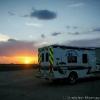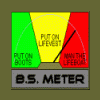I spoke to a friend this morning who is a ER nurse and asked him about giving Salbutamol to a CHF patient as well as talked a bit about what is going on with a CHF patient. From my understanding now is that giving a CHF patient Salbutamol is a good thing, as it opens up the bronchioles which will then allow for better oxygen exchange in the lungs. I also learned that a patient experiencing pulmonary edema from CHF is due to left heart failure. when the left ventrical decreases in cardiac output it causes the fluid to back up into the lungs. I may be wrong, but when a pt. has CHF along with pulmonary edema, Starling law is no longer affective. Taht is the ventrical is unable to stretch to its maximum compacity, which in turn causes the preload to be affected.
In my understanding now of CHF and giving a pt. Salbutamol is that it will not cause the patient to experience an increase of fluid in there lungs, but will indeed help them, due to dilating the bronchioles helping the patient get better oxygen exchange.
I believe the mechanism that causes the pulmonary edema is a circulatory issue due to the left heart failure. Part of what I was taught in school was that at times we may need to bag a patient with CHF due to the poor oxygen exchange in the lungs and pending respiratory failure.
I have never seen it, but I know of paramedics that have had to bag a patient that where a foamy substance is coming out of the patient's mouth due to the overload of fluid in the lungs. Our objective is to bag this patient and attempt to push the foamy substance and the fluid out of the lungs and back into the circulatory system, so that the patient will be able to have better oxygen exchange, which then increase their respiratory efforts, hopefully keep them from going into respiratory arrest.
Well there it is my second attempt of trying to figure this problem out and hopefully answer some of the questions asked.
Thanks for all that have participated in this discussion as I find discussions like this very helpful in understanding and learning more about certain complications that a I need to deal with as a paramedic.






